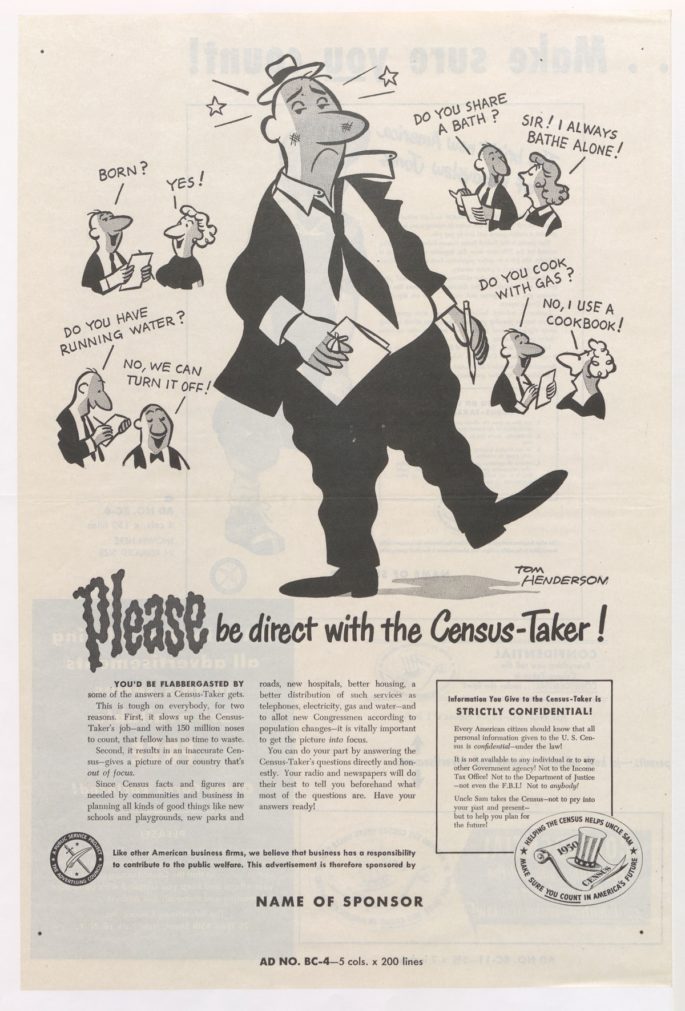
 Since 1790, the U.S. government has counted and surveyed the country’s population every ten years -- this is known as the Decennial Census and officially called the Census of Population and Housing. In fact, Article 1, Section 2 of the U.S. Constitution mandates the taking of the federal census.
Since 1790, the U.S. government has counted and surveyed the country’s population every ten years -- this is known as the Decennial Census and officially called the Census of Population and Housing. In fact, Article 1, Section 2 of the U.S. Constitution mandates the taking of the federal census.
The Constitution requires the Census as a foundational element of government structure and functioning of the country. From Congressional apportionment, distribution of federal funds, to military and infrastructure planning, data collected by the Census is used to determine many aspects of political processes, government, and programs that benefit society. Over time the Census grew to include both population and non-population data. And although the Decennial Census is the most extensive program of the Census Bureau, since they strive to reach all Americans, the Census Bureau has many other data-gathering programs.
Census data in research
From a research perspective, Census data is used in many domains, including economics and commerce, education and healthcare, sociology, history, genealogy, and many others.
The U.S. census is also considered the “backbone” of genealogical research as it puts individuals in a specific time and place in U.S. history. The U.S. Census Bureau gathers data for the Federal Government, and the release of names for use in genealogical research is a by-product of the data gathering. In addition, census records can reveal much information about family history. For example, they can show where a particular person lived, who they lived with, their age, place of birth, occupation, and more.
Release of census data
To take the Census, an enumerator recorded the names of residents on a questionnaire form going door to door in an assigned area. This questionnaire is the original Census Population enumeration record or form. Numerical data from these forms were compiled, tallied, and released as soon as they could be processed for the entire nation. Federal law mandates a 72-year waiting period for these records with personal identifying information to become public. The law protects citizens' confidentially, and Census Bureau employees can face fines or prison for violating this law. As a result, names and images from the 1950 Decennial Census, taken on April 1, 1950, were publicly released 72 years later on April 1, 2022.
As previously mentioned, the numerical or statistical data from the U.S. Census (i.e. data abstracted and compiled from the original enumeration) is released within a year or so of the census being taking taken. This statistical data is critical for federal and state government planning, apportionment of funds at the federal, state, and local levels, and many other governmental and social needs. It is utilized by grant writers, business planners, social and scientific researchers, educators, and others. In addition, the Census Bureau has hundreds of programs that allow decision-makers to access more timely information about our country and communities. These Census Bureau statistics and programs are summary statistical data and do not contain the personal names shown in the original census records.
This research guide contains:
Please note many historical census documents contain terms that may be offensive to some and should be taken in an historical context.
This LibGuide is maintained by the
SLNC Government & Heritage Library
Website:
https://statelibrary.ncdcr.gov/about-us/government-and-heritage-library
Phone: (919) 814-6790
Email: slnc.reference@dncr.nc.gov
Physical address:
109 E. Jones St.
Raleigh, NC 27601
Mailing address:
4640 Mail Service Center
Raleigh, NC 27699-4600